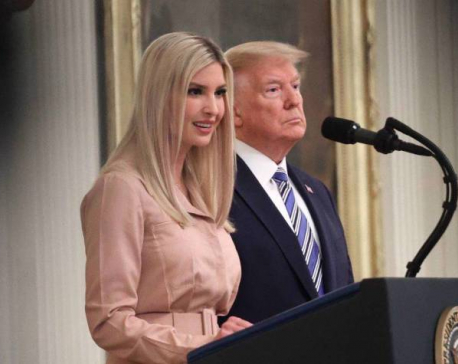
OR
Dollar at one week high after hawkish Fed minutes; Asia stocks capped
Published On: October 18, 2018 08:00 AM NPT By: Reuters
TOKYO, Oct 18: Asian stocks were capped and the dollar rose to a one week-high in early Thursday trade after the minutes of the Federal Reserve’s latest meeting showed broad agreement among board members on the need to raise borrowing costs further.
The specter of rising U.S. dollar yields, which along with global trade tensions were at the center of last week’s global equities rout, kept riskier appetite in check in Asia.
MSCI broadest index of Asia-Pacific shares outside Japan fell 0.2 percent, while the Australian benchmark also dropped 0.2 percent.
Japan’s Nikkei average was flat, and appeared to struggle for headway. Data out earlier in the day showed exports from the world’s third-biggest economy dropped for the first time since late 2016, hit by declines in shipments to the United States and China.
The U.S. dollar index and Treasury yields rose to its highest levels in a week on Wednesday.
The dollar index, which measures its value against six major peers, last traded at 95.654, little changed on the day, while 10 year Treasury yield last stood at 3.211 percent, 3.2 basis points higher than the U.S. close.
The minutes from the Fed’s Septa 25-26 meeting showed every Fed policymaker backed raising interest rates last month and also generally agreed borrowing costs were set to rise further, despite U.S. President Donald Trump’s view that the tightenings have already gone too far.
Major currencies have shown limited reaction after the U.S. government late on Wednesday refrained from naming China or any other trading partner as a currency manipulator, as it leans on import tariffs to try to cut a trade deficit with China, soothing investor sentiment in Asia.
In its semi-annual currency report, the U.S. Treasury Department said a recent depreciation of China’s yuan currency will likely exacerbate the U.S. trade deficit, but U.S. officials found Beijing appeared to be doing little to directly intervene in the currency’s value.
The yuan was steady at 6.9315 per dollar in the offshore trade, not far off 1-1/2-year low of 6.9587 touched in August.
But some investors remain wary of a slide towards the psychologically important level of 7 to the dollar.
“With U.S. Treasury yields beginning to creep higher again, President Trump hinting at further tariffs on Chinese goods and the CSI 300 trading at close to its lowest level since the summer of 2016, the continued risk of a fresh bout of weakness (in the yuan) cannot be ignored,” said Simon Derrick, chief currency strategist at BNY Mellon.
In Europe, the European Council meeting kicked off on Wednesday with a roundtable dinner, with British Prime Minister Theresa May’s address ahead of it, though expectations that anything substantial will come out of it have already been fading.
“Hopes for Brexit deal has supported the pound for the past two months. So if there’s no meaningful development, other than longer transition period, the pound could come under short-term selling pressure,” said Tohru Sasaki, head of markets research at JPMorgan Chase Bank in Tokyo.
Oil prices fell on Wednesday, with U.S. futures settling below $70 a barrel for the first time in a month, after U.S. crude stockpiles rose 6.5 million barrels, almost triple what analysts had forecast, while exports dropped.
The West Texas Intermediate crude futures and Brent crude futures last traded at $69.79 and $80.08 a barrel, respectively.
You May Like This

We have not issued any threat whatsoever to Nepali leaders to accept MCC grant: Ambassador Berry
Whether Nepal ratifies the MCC agreement is a decision for Nepal to make as a sovereign democratic nation and the... Read More...

What will happen to UN peacekeeping?
UN peacekeeping for the foreseeable future is likely to follow the trend as observed from the 60s to the 80s. Read More...

Ivanka the inevitable?
For the Trumps, Ivanka may well be the ideal frontwoman. She is as soulless and cutthroat as her father, but... Read More...






Just In
- CM Karki to Speaker: Resolution motion for vote of confidence unconstitutional
- EC reminds all for compliance with Election CoC
- 13 killed, several injured after strike at Al-Maghazi refugee camp in Gaza
- NA team leaves for Solukhumbu to launch Clean Mountain Campaign
- Airee holds 11th position in ICC updated ranking for all-rounders
- Tension mounts in Biratnagar following clash between two communities during Ram Nawami rally
- 76-km solar fence placed to mitigate human-tusker conflict in Jhapa
- Nepal secures semi-final spot with thrilling victory over Saudi Arabia













Leave A Comment